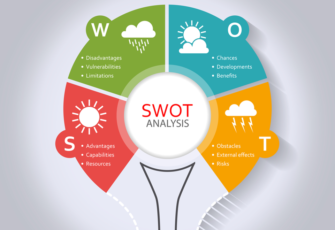
The ability to convey information clearly and appealingly is crucial in today's digital world. Visual hierarchy is a critical idea at the heart of this skill. This idea is critical in moving viewers through content intuitively and engagingly. Designers, content providers, and educators may dramatically improve the impact of their messaging by mastering visual hierarchy.
The Essence of Visual Hierarchy
The arrangement or display of items in a way that conveys importance is referred to as visual hierarchy. It determines how the human eye perceives what it sees. This is more than simply having a document or webpage seem nice; it's about organizing material in a way that corresponds with the natural scanning behavior of the human eye, ensuring vital points stand out and are successfully digested.
Utilizing Size and Contrast
The adjustment of size and contrast is one of the easiest techniques to build a visual hierarchy. Larger components, by definition, attract more attention than smaller ones. Items that contrast sharply with their surroundings, whether by color, form, or texture, also stand out. For example, headlines are often bigger and bolder than the article content, making them more visible and conveying their significance.
The Role of Color and Texture
Color and texture are also important in creating a visual hierarchy. Bright colors can be used to emphasize crucial points or buttons that need action, such as a form's "Submit" button. Textures, on the other hand, may provide depth to a design by drawing the viewer's attention to critical locations. However, to avoid overloading the viewer and weakening the effect of the key areas, employ these components sparingly.
Spatial Relationships: Organizing Content
Another important part of visual hierarchy is the spatial arrangement of items. Adequate spacing around items, sometimes known as 'white space,' may make a design seem more attractive and simpler to traverse. Grouping relevant elements also aids in the creation of a feeling of organization, allowing viewers to assimilate information in chunks.
Typography: More Than Just Font Choice
Typography is more than just selecting appealing fonts; it is also about using many typefaces, weights, and styles to create a feeling of order and importance. Headers, subheaders, body text, and captions each have a purpose and should be distinguished from one another while keeping overall design consistency.
The Power of Imagery
Images are effective tools for creating a visual hierarchy. They can be used to draw attention, establish an atmosphere, or swiftly and efficiently deliver difficult material. Image location and size should be carefully studied to ensure that they assist, rather than overpower, the written content.
Balancing Act: Harmony in Design
Developing an effective visual hierarchy is a delicate balancing act. It necessitates a great eye for detail as well as an awareness of how various aspects interact with one another. The objective is to produce a unified design that organically takes the visitor through the material, with no element seeming out of place or dominating.
Ultimately, mastering visual hierarchy is critical for anybody wishing to display information effectively and interestingly. Remember that excellent design is about more than simply aesthetics; it is also about functionality and clarity.



